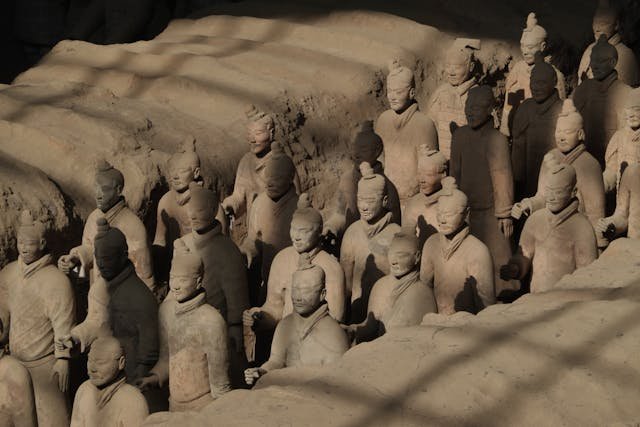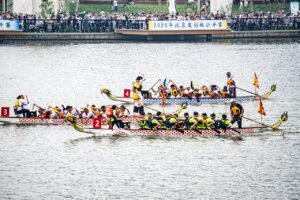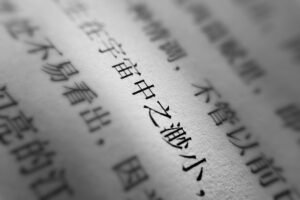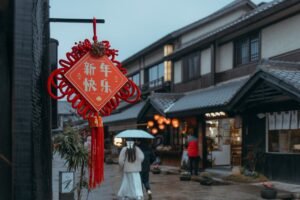How did a simple search for water turn into an amazing archaeological marvel today?
In 1974, local farmers in Shaanxi Province, China found bits of a clay figure. This led to the discovery of the Terracotta Army. Near the first emperor of China’s unopened tomb, over 2,000 life-size clay soldiers and horses were found. They had been buried for more than 2,000 years. The site covers 22 square miles with about 600 pits.
When the first pit was found, folks understood the greatness of Qin Shi Huang’s world. Over 2,000 clay warriors have been uncovered. But, experts think around 8,000 were made. This site in Xianyang, Qin Shi Huang’s old capital, is a big deal. Imagine it being as famous as the Great Wall. And also like Beijing’s Forbidden City.
In 1979, the Museum of Qin Terra-Cotta Warriors and Horses opened. It covers four acres. It is a key part of the Emperor Qinshihuang’s Mausoleum Site Museum. From 2007 to 2009, shows with these warriors were held in famous places. Like the British Museum and the National Geographic Museum.
The Terracotta Army shows Emperor Qin Shi Huang’s amazing history. These clay figures were made over 2,000 years ago. They still impress everyone today.
Table of Contents
ToggleDiscovery of the Terracotta Army
In 1974, while digging a well outside Xi’an, China, local farmers made an accidental discovery. They found fragments that led to the Terracotta Army’s discovery. This find sparked excitement and early excavations to unearth the full ancient wonder.
The Accidental Find
Peasants in 1974 stumbled upon the Xi’an Mausoleum. They first thought the fragments they found were unimportant. But, they were actually pieces of over 600 terra-cotta warriors and horses. These finds have been found over a 22-square-mile area in Shaanxi province in the last 50 years.
Initial Reactions and Early Excavations
The first reactions were of shock and curiosity. This find illuminated the Qin Dynasty’s vivid history. Early excavations uncovered 8,000 clay soldiers, each showing different roles and moods. Yet, only over 2,000 have since been discovered.
These leading discoveries led to more archaeological work. Various pits and vaults were found. These include the tomb complex, made by about 720,000 workers. It still holds many secrets, like mercury rivers and palace replicas. Ongoing studies and technology are aiding in finding more from the Xi’an Mausoleum.
Historical Significance of the Terracotta Warriors
The Terracotta Warriors were found in 1974 by chance. They show the Qin Dynasty’s lasting influence. This army reflects China’s rich culture and the power of Emperor Qin Shi Huang.
Qin Dynasty and Emperor Qin Shi Huang
Under Emperor Qin Shi Huang’s rule, the Qin Dynasty achieved a lot. He brought China together through war and alliances. The building of the Great Wall and a long road system helped him control his vast lands.
The emperor had a huge tomb built with the help of 720,000 workers. He aimed to live forever and even sent people to find mythical lands. When he died in 210 B.C.E, his successors fought over power, showing a difficult time after his rule.
Cultural and Military Importance
The Terracotta Army is an amazing view of the Qin Dynasty’s military skill. It shows the army’s order and the different people in it. In Xi’an, over 2,000 warriors were found in the pits.
Between 2007 and 2009, the world saw these figures in different countries. It helped people learn about China’s old military ways. The site is UNESCO World Heritage. It is still visited by many, showing its lasting importance.
| Aspect | Details |
|---|---|
| Discovery | Accidental in 1974 while digging a well |
| Extent of Site | 56 square kilometers |
| Number of Pits | Around 600 |
| Excavated Warriors | Over 2,000 |
| Estimated Number of Warriors | 8,000 |
| Recognized Status | UNESCO World Heritage Site (1987) |
The story of the Terracotta Warriors tells of a time of careful military planning. The find of 40,000 real bronze weapons also shows the Qin Dynasty’s smart strategies. Today, the Terracotta Army stands for Emperor Qin Shi Huang’s big influence on China’s military and culture.
Details of the Xi’an Mausoleum
In Shaanxi Province is the Mausoleum of the First Qin Emperor. It is a big sign of ancient Chinese art and building. Covering 22 square miles, this site amazes people with its size and history.
Archaeologists found about 600 pits here in the past 50 years. They found over 2,000 warriors from the Terracotta Army. But, some 6,000 more warriors may still be in the ground, telling us more about Qin Shi Huang.
The Xi’an Mausoleum shows Qin Shi Huang’s big plans. His city, Xianyang, had over 270 palaces. Today, we see only one foundation from his time. Qin also built a road network stretching over 4,000 miles. It had special speedways for the imperial family.
Qin Shi Huang started the Great Wall of China. It was first made from earth and rubble. Later, the Ming dynasty rebuilt it with stone and brick. But, Qin’s efforts laid the foundation for this famous wall, showing his power in ancient China.
Inside the mausoleum, we found more than warriors. There were terracotta acrobats, strongmen, musicians, and even bronze water birds. These tell us about life and fun at the Qin court. Also, thousands of real bronze weapons were discovered, proving the strong military of Qin Shi Huang’s time.
In 1987, the Terracotta Army became a UNESCO World Heritage site. This title shows it is a special place for all people, known for its wonder and history.
The upcoming exhibition “China’s Terracotta Warriors: The First Emperor’s Legacy” at the Asian Art Museum will show more. It opens from February 22 to May 27. It will teach us a lot about the Xi’an Mausoleum and ancient Chinese art and history.
The Construction and Craftsmanship of the Terracotta Sculptures
The Terracotta Army shows Ancient Chinese Craftsmanship at its best. Each warrior is different, showing the unique work of the artisans. They used special techniques to make many sculptures quickly, but with great care.
Mass-Production Techniques
Over 2,000 warriors and horses were already made, with 6,000 more still buried. The artisans used an assembly line to create these. This approach made production fast and cost-effective. Yet, it didn’t compromise on quality or uniqueness.
| Aspect | Details |
|---|---|
| Number of Warriors Excavated | 2,000+ |
| Estimated Warriors still Buried | 6,000+ |
| Bronze Weapons Discovered | 40,000+ |
| Duration of Construction | Three Decades |
| Labor Force | Government laborers, local craftsmen, and convicts |
Materials and Methods Used
The artisans used local clay to make the warriors. They painted the sculptures with bright colors at first. But, over time, these colors have mostly faded. Each warrior was unique, showing the high skill and attention to detail back then.
The Military Formation of the Unearthed Warriors of Qin Shi Huang
The Terracotta Warriors show Emperor Qin Shi Huang’s smart military plans. They stand in groups, showing a clear army structure. About 2,000 warriors and horses have been found. But more than 6,000 are still underground. This shows how Qin Shi Huang had good ideas for war.
The Terracotta Army has all kinds of soldiers like foot soldiers, archers, and leaders. Each soldier looks different in the face, wears unique clothes, and has special hair. This shows their military jobs and how well they were ready for war.
| Rank | Role | Distinctive Features |
|---|---|---|
| Infantrymen | Core soldiers, ground forces | Plain armor, determined expressions |
| Archers | Long-range attackers | Distinct poses, tense demeanor |
| Generals | High-ranking commanders | Ornate armor, commanding stature |
| Cavalrymen | Mounted units | Mounted on horses, alert expression |
| Charioteers | Chariot drivers | Holding reins, focused look |
| Officers | Intermediate commanders | Distinct armors, authoritative presence |
| Guards of Honor | Elite protectors | Elegant armor, dignified appearance |
This area covers 56 square kilometers. It shows how big Qin Shi Huang’s ideas were. More than 40,000 bronze weapons have been found there. This tells us about their strong and well-prepared army. Qin Shi Huang’s tomb still holds many treasures. It shows how big and detailed his military plans were. The Terracotta Warriors not only show his strength but also his dreams.
The Diversity and Individuality of the Soldiers
The Terracotta Army is a symbol of ancient Chinese art and detail. It features over 2,000 soldiers, each one different. They show the wide range of people in Emperor Qin Shi Huang’s world. This includes their unique faces, hair, and hats, showing off soldiers’ individual traits.
Unique Facial Features and Styles
The Terracotta Army’s soldiers are all distinct. None look the same. The craftsmen made sure each one was special. They focused on details like hair and expressions to make each figure stand out.
- The terracotta warriors were painted with vibrant colors, though much of the paint has faded over time.
- Styles range from elaborate topknots to intricate braids, emphasizing the diversity of ranks and roles within the army.
- Over 100 original pieces from the Terracotta Army collection are showcased at the MARQ exhibit, offering visitors a closer look at these unique features.
Different Ranks and Roles
Not only do the soldiers look different, but their clothes and weapons show their roles. You can tell if they were foot soldiers, leaders, or chariot drivers. This shows the order in the ancient army.
| Rank/Roles | Features | Numbers in Pit 1 |
|---|---|---|
| Infantrymen | Simple armor and weaponry | 1,900 |
| Officers | More elaborate dress and higher quality armor | Varied |
| Chariot Drivers | Specialized helmets and reins | Numerous in Pit 2 |
This diversity shows the complex army under Emperor Qin Shi Huang. It highlights each soldier’s important role. Additionally, it shows the culture and complexity of Qin Shi Huang’s rule.
The Museum of Qin Terra-Cotta Warriors and Horses
The Museum of Qin Terra-Cotta Warriors and Horses shows us Emperor Qin Shi Huang’s greatness in a unique way. It welcomes people from all over the world. A UNESCO site, it shows many warriors as they were found, sharing ancient Chinese history.
For five decades, experts have explored the museum’s land, revealing secrets. They’ve found over 600 pits across 22 square miles. Of about 8,000 warriors, they’ve dug up over 2,000. These efforts help us see the splendor of Qin Shi Huang’s capital, Xianyang. It once had 270 palaces and employed 720,000 in building the emperor’s tomb.
The museum is well-known worldwide. It has showcased the original warriors in various exhibitions. These include events at the British Museum and the Asian Art Museum. The Asian Art Museum drew nearly 23,000 people, including 14,000 children. This shows how beloved and educational these treasures are.
An interesting story involves a lost warrior that made its way to San Francisco. The museum asked for help in finding it. People posted pictures of the warrior around San Francisco, from museums to parks. These tales add to the museum’s charm.
At the Museum of Qin Terra-Cotta Warriors and Horses, visitors will see over 100 ancient items. This includes eight warriors and two horses. These relics help us feel close to Qin Shi Huang’s dream of an afterlife.
Global Exhibitions of the Terracotta Warriors
The Terracotta Warriors are a wonder in archaeology. They have toured the world, dazzling people with their old Chinese art and meaning. This has helped share cultures and deepened the world’s knowledge of China’s past.
Notable Exhibitions and Venues
From 2007 to 2009, these original clay warriors visited big museums, attracting millions. The shows were in places like the British Museum, Atlanta’s High Museum, and more. Every spot let these ancient works shine, showing their historical and cultural worth.
Impact on International Audiences
Across the globe, the Terracotta Warriors are now famous symbols. Their designs and story show off China’s deep roots to everyone they meet. In San Francisco, the Asian Art Museum’s event pulled in over 23,000 people. More than 14,000 were students. This event showed just how much people love these ancient items and how much we can all learn from them.
| Location | Institution | Year |
|---|---|---|
| London | British Museum | 2007 |
| Atlanta | High Museum | 2008 |
| California | Bowers Museum | 2008 |
| Houston | Museum of Natural Science | 2009 |
| Washington D.C. | National Geographic Society Museum | 2009 |
Their time at these places showed the world their big role and inspired people everywhere. It made more folks love ancient Chinese art and visit Emperor Qin Shi Huang’s achievements.
The UNESCO World Heritage Status
The Terracotta Army became a UNESCO World Heritage Site in 1987. This recognition highlights its deep cultural and historical value. It was found on March 29, 1974, by a farmer named Yang Zhifa. This find marked the start of uncovering a huge archaeological site. So far, more than 2,000 warriors and horses have been found. But it’s believed there are about 6,000 more still under the ground.
The variety among the terracotta figures is amazing. Each warrior looks different, with special face features and clothing. This adds to the site’s cultural heritage. Excavations have also found terracotta acrobats, musicians, and stone armor. These discoveries show the many treasures connected to Emperor Qin Shi Huang’s tomb.
The warriors used to have bright colors. They were made with care by skilled workers and local artists. They used the first mass-production methods in ancient China. The warriors even had real bronze weapons, showing great attention to detail.
This amazing site is in Shaanxi province, China, covering about 22 square miles. There are over 600 pits. Even with 50 years of digging, the First Emperor’s tomb is still closed. This adds mystery to the place. The Museum of Qin Terra-Cotta Warriors and Horses shows us a lot about this historical site. It has three major pits open for visitors to see.
Since being named a UNESCO World Heritage Site, work has been ongoing to protect this valuable cultural heritage. The goal is to let future generations see the stunning Terracotta Army.
| Fact | Details |
|---|---|
| Discovery Date | 29 March 1974 |
| Initial Excavations | Over 2,000 warriors and horses unearthed |
| Estimated Figures Still Undiscovered | Approximately 6,000 |
| UNESCO World Heritage Status | Granted in 1987 |
| Total Excavated Figures | Over 2,000 of an estimated 8,000 |
| Site Area | 22-square-mile area |
| Year Museum Opened | 1979 |
Additional Discoveries: Bronze Chariots and Waterfowl
Archaeologists have been working hard for five decades. They’ve explored the area around Emperor Qin Shi Huang’s mausoleum. They found more than the famous Terracotta Army. There are also bronze chariots and waterfowl sculptures. These discoveries show the artistic and cultural wealth of the Qin Dynasty.
Bronze chariots inside the mausoleum walls show advanced metal work. They hint at a strong power system and clever military tactics then. The pits haven’t just uncovered these chariots. There are also bronze horses. These lifelike pieces show off the Dynasty’s artists’ talents.
Waterfowl sculptures found at an imperial park reflect the Dynasty’s nature love. They include cranes, swans, and ducks with musicians. It paints a beautiful, peaceful picture of Qin Shi Huang’s time. These sculptures add to the mausoleum’s status as a precious site of ancient Chinese art.
These finds give us a better look at life and death in the Qin Dynasty. They speak of the civilization’s art and rich culture. The mix of utilitarian (bronze chariots) and beauty (waterfowl) in the burial site shows the emperor’s grand plans for the afterlife.
| Discovery | Location | Significance |
|---|---|---|
| Bronze Chariots and Horses | Inner wall of the mausoleum complex | Highlights advanced metallurgical skill and military strategy |
| Waterfowl Sculptures | Imperial park north of the outer wall | Showcases realism and appreciation for nature |
These findings of bronze chariots and waterfowl add to Emperor Qin Shi Huang’s tomb story. They show us the big effort in art under his rule. This spotlights the variety and wealth of ancient Chinese culture.
The First Emperor’s Quest for Immortality
The story of The Emperor’s Tomb is truly fascinating. It is filled with wonders like the Terracotta Warriors. Emperor Qin Shi Huang hoped to find a way to live forever. He built a huge tomb and a terracotta army to guard him in the afterlife.
Search for Eternal Life
The search for immortality led Qin Shi Huang across his vast empire. He looked for magic potions and elixirs. This search was the cornerstone of his time as emperor. His tomb, spanning over 6.3 square kilometers, shows his ambitious dreams of securing his legacy.
The Emperor’s Tomb
The Emperor’s Tomb’s discovery unveiled tales of splendor and mystery. Found just 0.75 miles away are the Army Pits with the Terracotta Warriors and many more treasures. The pits west of the inner wall contained sacrificed horses. And a pit held two large bronze chariots, highlighting the Qin Dynasty’s power.
The tomb’s design is a feat of ancient engineering. Yet, after over 30 years of excavation, much remains hidden. This leaves countless secrets and treasures yet to be found.
A modern exhibit is set to showcase rare artifacts from Qin Shi Huang’s time. It includes 8 terracotta warriors, 2 horses, and over 100 more items. Tens of thousands of visitors, including 14,000 students, are excited to see this peek into history. Such events bring to light the emperor’s endless pursuit of life after death and his significant role in history.
- Total number of terracotta warriors scheduled to appear in the museum exhibition: 8
- Number of life-size horses also part of the exhibition: 2
- Number of other ancient artifacts scheduled to be displayed: over 100
- Number of visitors who have already reserved tickets to see the exhibition: nearly 23,000
- Number of school children among the reserved tickets: more than 14,000
Contemporary Theories and Ongoing Research
Experts are always learning more about the Terracotta Army, giving us insights into Emperor Qin Shi Huang’s time. This ongoing research greatly helps us understand why and how this huge work was created. It uses new methods to learn about Emperor Qin Shi Huang’s rule and the Qin Dynasty’s life long ago.
The one-China goal Qin Shi Huang achieved is a huge moment in history. In 210 B.C., he was buried with 7,000 life-sized clay soldiers, part of his tomb. But, only about a third of them have been found yet. It’s likely we’ll keep finding them for many more years, showing off amazing craftsmanship.
The central tomb has mercury in the dirt all around it. Back then, some believed mercury could give people forever life. This dangerous find makes exploring the tomb tough and affects ongoing research. Whether to dig up the tomb is up to China’s government and depends on new tech.
Every year, we get better at keeping ancient things safe. This helps keep the memory of Emperor Qin Shi Huang fresh for later. Now we can keep enjoying the Terracotta Army for a long time.
| Aspect | Details |
|---|---|
| Estimated Total of Clay Soldiers | Over 8,000 |
| Number Uncovered So Far | About 2,000 |
| Number of Excavated Arrowheads | 37,348 found in 680 locations |
| Bronze Chariots Found | Numerous, indicating diverse artistic endeavors |
| Hazards | High levels of mercury contamination |
Findings like foremen seals and metal details show the huge effort that went into Qin Shi Huang’s tomb. As many as 700,000 people might have worked on it! They used many different metals to make weapons. This keeps teaching us about the detailed work and powerful army of ancient China.
The Legacy and Impact of Emperor Qin Shi Huang
Emperor Qin Shi Huang shaped China’s history with his key changes. He unified the country, making it easier for people from all regions to understand each other.
He also made everything the same in terms of money, weights, and how they wrote. This made it simpler for people to trade and talk, even if they were far apart.
Standardization Efforts
Qin Shi Huang made things work together better by using the same money, weights, and measures. Before, there were different rules for many things, making trade difficult. He also made sure everyone could understand the same written language. This helped with running the government smoothly across China.
Infrastructure and Innovations
He built big things that still impact China today. For example, his tomb was built by over 720,000 workers. He created a road network over 4,000 miles long, which had lanes only the emperor’s family could use. His projects also included the first steps in building the Great Wall to keep enemies out.
In short, Qin Shi Huang’s work in making things the same and building important structures stands out. He changed the way China worked, which is why he is an important historical figure.
Source Links
- https://www.smithsonianmag.com/history/what-you-need-know-about-chinas-terra-cotta-warriors-first-qin-emperor-30942673/
- https://www.liverpoolmuseums.org.uk/stories/top-10-facts-about-terracotta-warriors
- https://exhibitions.asianart.org/exhibitions/chinas-terracotta-warriors-the-first-emperors-legacy/
- https://www.nationalgeographic.com/history/article/emperor-qin
- https://www.nationalgeographic.com/history/article/china-first-emperor-terra-cotta-warriors-tomb
- https://suitcaseinspain.com/exploring-the-terracotta-warriors-exhibition-at-the-marq/
- https://smarthistory.org/the-terracotta-warriors/
- https://fastercapital.com/keyword/terracotta-army.html
- https://en.wikipedia.org/wiki/Mausoleum_of_the_First_Qin_Emperor
- https://smarthistory.org/tomb-first-emperor-qin/
- https://www.livescience.com/22454-ancient-chinese-tomb-terracotta-warriors.html
- https://www.washingtonpost.com/national/health-science/chinese-terra-cotta-warriors-had-real-and-very-carefully-made-weapons/2012/11/26/999b9cb4-2840-11e2-b4e0-346287b7e56c_story.html
- https://www.artsy.net/article/artsy-editorial-chinas-first-emperor-built-buried-7-000-strong-terracotta-army








